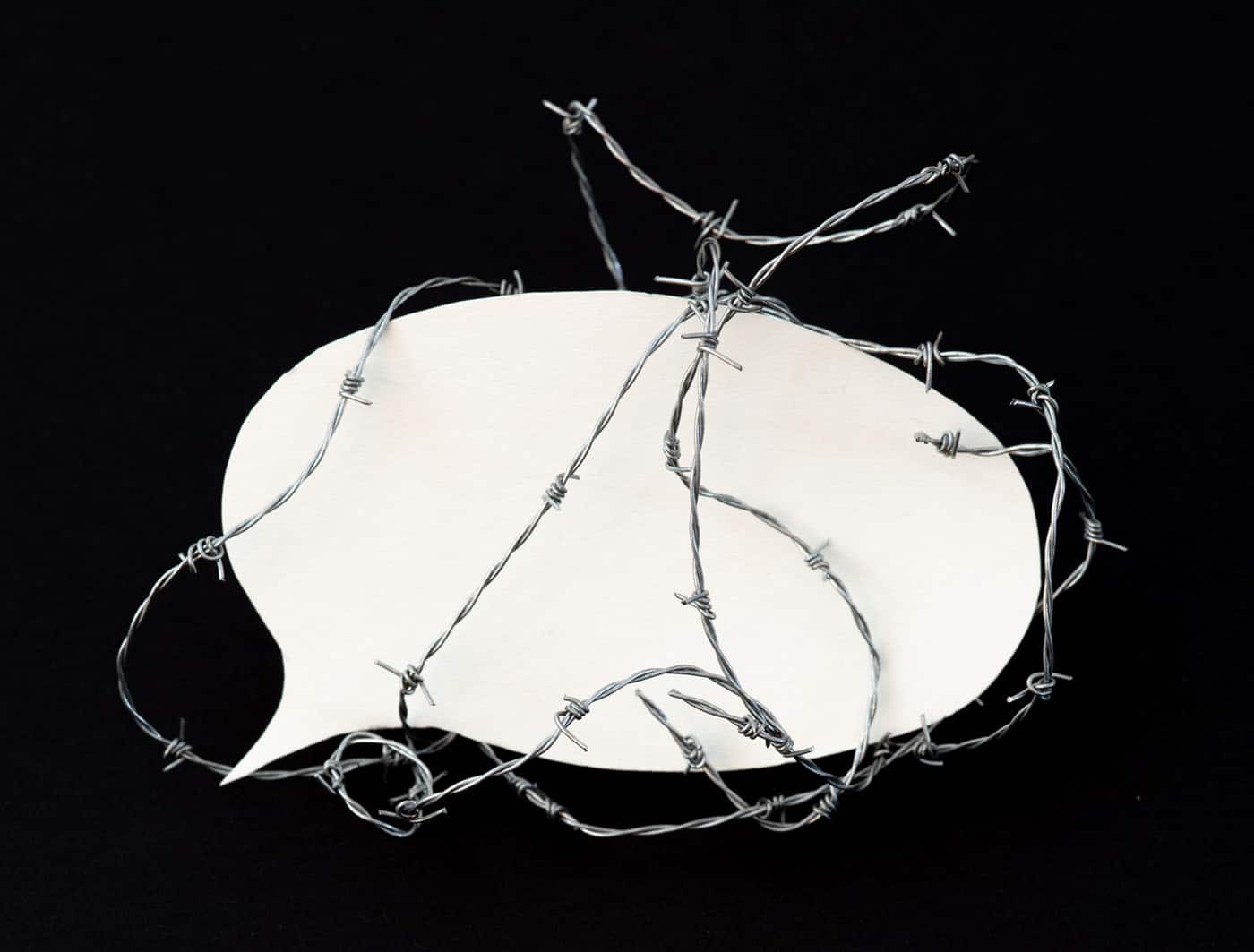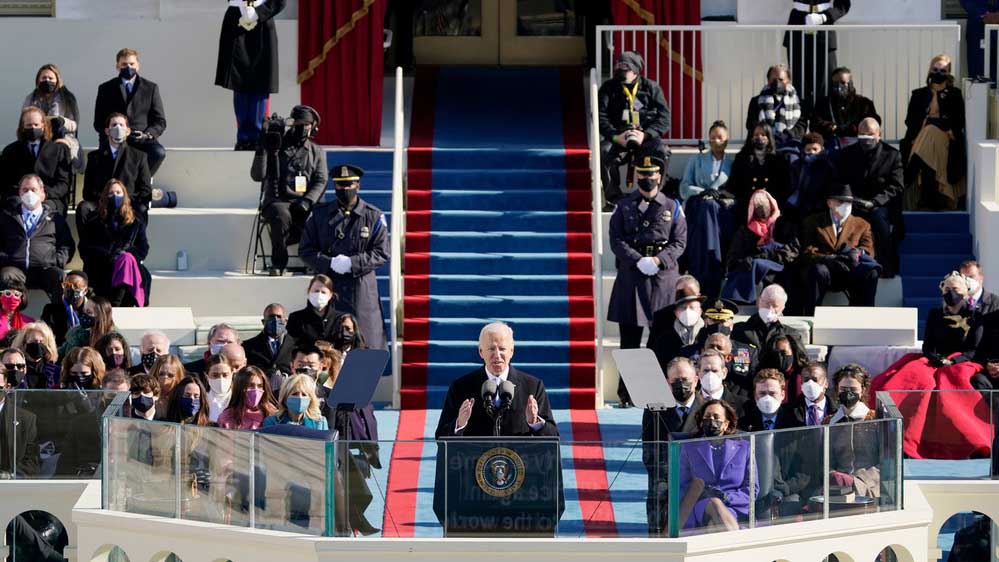July 18, 1937
In the collapse of Germany after the war the economic decline had been generally felt, the political decline had been denied by many, the cultural decline had not even been observed by the majority of the people. It was an age of phrases and catchwords: in the economic sphere the hard facts of misery and unemployment deprived these phrases of their force: in the political sphere such phrases as ‘international solidarity’ had more success and veiled from the German people the extent of the political collapse. But in the long run the failure of the parliamentary democratic form of government, copied from the west – a west which, regardless of this democratic form, still continued to extort from Germany whatever there remained to extort – defeated the phrase-mongers. Far more lasting was the effect of these phrases in the cultural field where they resulted in a complete confusion concerning the essential character of culture. Here the influence of the Jews was paramount and through their control of the press they were able to intimidate those who wanted to champion ‘the normal sound intelligence and instinct of men’. Art was said to be ‘an international experience’ and thus all comprehension of its intimate association with a people was stifled: it was said that there was no such thing as the art of a people or, better, of a race: there was only the art of a certain period. Thus it was not Greeks who created the art of Greece, Romans the art of Rome, etc. – in each art a particular period had found its expression. Art is a ‘time-conditioned phenomenon’. So today there is not a German or a French art, but a ‘modern art’. This is to reduce art to the level of fashions in dress, with the motto ‘Every year something fresh’ – Impressionism, Futurism, Cubism, perhaps also Dadaism. These newly created art phrases would be comic if they were not tragic.
The result was uncertainty in the judgements passed on art and the silencing of those who might otherwise have protested against this cultural Bolshevism [Kulturbolschewismus], while the press continued to poison our sound appreciation of art. And, just as in fashions one must wear ‘modern’ clothes whether they are beautiful or not, so the great masters of the past were decried. But true art is, and remains, eternal: it does not follow the law of the season’s fashions; its effect is that of a revelation arising from the depths of the essential character of a people which successive generations may inherit. But those who do not create for eternity do not readily talk of eternities: they seek to dim the radiance of these giants who reach out of the past into the future in order that contemporaries may discover their own tiny flames. These facile daubers in art are but the products of a day: yesterday – non-existent; today – modern; tomorrow – out-of-date. The Jewish discovery that art was just a matter of period was for them a godsend: theirs could be the art of the present time. Theirs was a small art – small in form and substance – and at the same time intolerant of the masters of the past and the rivals of the present. There was a conspiracy of incapacity and mediocrity against better work from any age. The nouveaux riches, having no judgements of their own in artistic matters, accepted these artists at their own valuation. It was an added attraction that these works of art were difficult to understand and on that account very costly: no one wished to admit lack of comprehension or inadequate resources! But, if one does not oneself understand, probably one’s neighbour will not either, and he will admire one’s comprehension of obscurity.
For this ‘modern art’ National Socialism desires to substitute a ‘German’ art and an eternal art. This House of German Art is designed for the art of the German people, not for an international art. The people in the flux of phenomena are the one constant point. It is that which is abiding and permanent and therefore art as the expression of the essential character of the abiding people must be an eternal monument, itself abiding and permanent; there can therefore be no standard of yesterday and today, of modern or un-modern; there can be only the standard of ‘valueless’ or ‘valuable’, of ‘eternal’ or ‘transitory’. Therefore, in speaking of ‘German art’, I shall see the standard for that art in the German people, in its character and life, in its feeling, its emotions and its development.
From the history of the development of our people we know that it is composed of a number of more or less distinct races, which in the course of millennia through the formative influence of a certain outstanding racial kernel produced that mixture that we see before us in our people today. This force – which formed the people in time past and which still today continues that formative activity – lies in the same Aryan branch of mankind that we recognise not only as the support of our own civilisation but of the earlier civilisations of the ancient world.
The way in which our people was composed has produced the variety in our own cultural development but, as we look upon the final result of this process, we cannot but wish for an art that may correspond to the increasing homogeneity of our racial composition, and thus present in itself the characteristics of unity and homogeneity. Many attempts have been made through the centuries to define what ‘to be German’ really means. I would not seek to give an explanation in the first instance. I would rather state a law – a law previously expressed by a great German: ‘To be German is to be clear’, and that means that to be German is to be logical and true. It is this spirit that has always lived in our people, which has inspired painters, sculptors, architects, thinkers, poets, and above all our musicians. When on 6 June 1931 the Crystal Palace [Glaspalast] was burned down, there perished with it an immortal treasure of German art. The artists were called Romantics and yet they were but the finest representatives of that German search for the real and true character of our people, for an honest and decent expression of this law of life divined by our people. For it was not only their choice of subject that was decisive but the clear and simple mode of rendering these sentiments. Many of their original works are lost, we possess only copies or reproductions, but the works of these masters are removed by a great gulf from the pitiable products of our modern so-called ‘creative artists’. These masters felt themselves to be Germans, and consequently they created works that should be valued as long as there should be a German people to appreciate them. But these modern works we should also preserve as documents illustrating the depths of that decline into which the people had fallen. The Exhibition of ‘Degenerate Art’ [Entartete Kunst] is intended as a useful lesson.
During the long years in which I planned the formation of a new Reich I gave much thought to the tasks which would await us in the cultural cleansing of the people’s life: there was to be a cultural renaissance as well as a political and economic reform. I was convinced that peoples who have been trodden underfoot by the whole world of their day have all the greater duty consciously to assert their own value before their oppressors, and there is no prouder proof of the highest rights of a people to its own life than immortal cultural achievements. I was therefore always determined that, if fate should one day give us power, I should discuss these matters with no-one else but would come to my own decisions, for it is not given to all to have an understanding for tasks as great as these. Amongst the plans which floated before my mind both during the war and after the collapse was the idea of building a great new exhibition palace in Munich; and many years ago I thought of the place where the building now stands. In 1931 I feared that I should be anticipated and that the ‘men of November’ would erect an exhibition building. Plans were indeed produced for an edifice that might well have served for a railway station or a swimming bath. But, when we came to power in 1933, the plan had not been executed: the erection of the building was left to the Third Reich. And the building is so unique, so individual that it cannot be compared with anything else: it is a true monument for this city and more than that – for German art… It represents a turning point, the first of the new buildings that will take their place amongst the immortal achievements of German artistic life.
But the House is not enough: it must house an exhibition and, if now I venture to speak of art, I can claim a title to do so from the contribution that I myself have made to the restoration of German art. For our modern German state, which I with my associates have created, has alone brought into existence the conditions for a new and vigorous flowering of art. It is not Bolshevik art collectors or their henchmen who have laid the foundations, for we have provided vast sums for the encouragement of art and have set before art itself great, new tasks. In politics, as in German artistic life, we are determined to make a clean sweep of empty phrases. Ability is the necessary qualification if an artist wishes his work to be exhibited here. People have attempted to recommend modern art by saying that it is the expression of a new age but art does not create a new age, it is the general life of peoples that fashions itself anew and often looks for a new expression… A new epoch is not created by littérateurs but by warriors, those who really fashion and lead the peoples and thus make history… It is either impudent effrontery or an almost inconceivable stupidity to exhibit to people today works that might have been made by a man of the Stone Age perhaps ten or twenty thousand years ago. They talk of primitive art but they forget that it is not the function of art to retreat backwards from the development of a people: its sole function must be to symbolise that living development.
The new age of today is at work on a new human type. Men and women are to be healthier and stronger. There is a new feeling of life, a new joy in life. Never was humanity in its external appearance and in its frame of mind nearer to the ancient world than it is today… This, my good prehistoric art stutterers, is the type of the new age, but what do you manufacture? Malformed cripples and cretins, women who inspire only disgust, men who are more like wild beasts, children who, were they alive, would have to be seen as cursed by God.
And let no one tell me that this is how these artists see things. From the pictures sent in for exhibition it is clear that the eye of some men portrays things otherwise than as they are, that there really are men who on principle feel meadows to be blue, the heavens green, clouds sulphur-yellow, or, as perhaps they prefer to say, ‘experience’ them thus. I need not ask whether they really do see or feel things in this way, but in the name of the German people I have only to prevent these miserable unfortunates, who clearly suffer from defects of vision, from attempting violently to persuade contemporaries by their chatter that these faults of observation are indeed realities or from presenting them as ‘art’. There are only two possibilities here. Either these ‘artists’ really do see things in this way and believe in what they represent. Then one has only to ask how the defect in vision arose, and if it is hereditary the Minister for the Interior will have to see to it that so ghastly a defect of vision shall not be allowed to perpetuate itself. Or if they do not believe in the reality of such impressions but seek on other grounds to burden the nation with this humbug, then it is a matter for a criminal court. There is no place for such works in this building. The industry of architects and workmen has not been employed to house canvases daubed over in five hours, the painters being assured that the boldness of the pricing could not fail to produce its effect, that the canvas would be hailed as the most brilliant lightning creation of a genius. No, they can be left to cackle over each other’s eggs!
The artist does not create for the artist. He creates for the people, and we shall see to it that the people in future will be called on to judge his art. No one must say that the people have no understanding for a really valuable enrichment of its cultural life. Before the critics did justice to the genius of a Richard Wagner, he had the people on his side, whereas the people have had nothing to do with so-called ‘modern art’. The people have regarded this art as the outcome of an impudent and shameless arrogance or of a simply deplorable lack of skill. It has felt that this art stammer, these achievements, which might have been produced by untalented children of eight to ten years old, could never be considered an expression of our own times or of the German future. When we know today that the development of millions of years, compressed into a few decades, repeats itself in every individual, then this art, we realise, is not ‘modern’. It is on the contrary extremely ‘archaic’, far older probably than the Stone Age. The people in passing through these galleries will recognise in me its own spokesman and counsellor. It will draw a sigh of relief and gladly express its agreement with this purification of art. And that is decisive: an art that cannot count on the readiest and most intimate agreement of the great mass of the people, an art which must rely upon the support of small cliques, is intolerable. Such an art only tries to confuse, instead of gladly reinforcing, the sure and healthy instinct of a people. The artist cannot stand aloof from his people. This exhibition is only a beginning, but the end of Germany’s artistic stultification has begun. Now is the opportunity for youth to start its industrious apprenticeship, and when a sacred conscientiousness has at last come into its own, then I have no doubt that the Almighty from the mass of these decent creators of art will once more raise up individuals to the eternal starry Heaven of the imperishable God-favoured artists of the great periods. We believe that especially today, when in so many spheres the highest individual achievements are being manifested, in art also the highest value of personality will once again assert itself.
Via NS Europa.
Source Article from http://www.renegadetribune.com/adolf-hitlers-speech-cleansing-germany-modern-art/
Related posts:
Views: 0
 RSS Feed
RSS Feed

















 July 21st, 2017
July 21st, 2017  Awake Goy
Awake Goy 




 Posted in
Posted in  Tags:
Tags: 
















